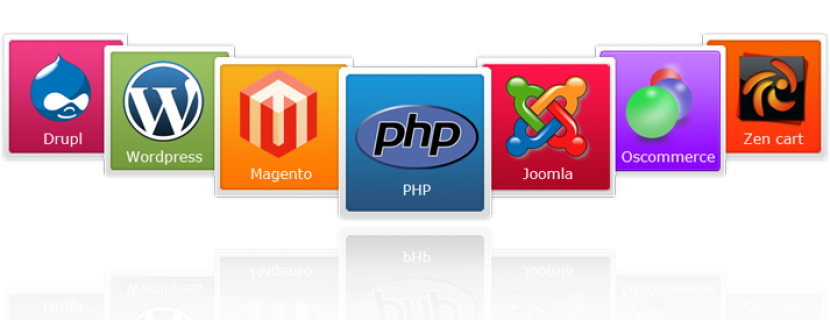Open Source Content Management System aka CMS is abundantly used for building almost any sort of website on the web. These CMSs are no doubt the flawless victors of the present web industry.
But the future for such open source technologies can be only predicted depending upon how these are deployed and their relative pros and cons.
The growing communities certainly add up points for the fact that these Open Source CMSs are going to be more prevalent and easier to use in the future. Larger mass of communities means greater number of bug reports and fixes and elevated number of stability improvements.
Now days, objective for each website has a specialised CMS to accomplish the job. Wordpress freely distributes a blogging platform whereas Magento provides with free eCommerce and Drupal provides with both the features.
Drupal provides uttermost scalability and dynamic features that enhances the possibilities of creating powerful content-driven website, media management, easy modifications, and extensive scope of socialising through community, forums and blog.
Open source websites has been under limelight in the recent years because of its free licensed and open model. Today’s consumers demand a rich and intuitive user experience with content that exactly reflects the news, views and latest products on offer. Thus a comprehensive solution to this is a must.
Let’s narrow down our research towards the pros that an open source technology has to offer and the cons one may refer.
The main advantage with Open source is the source code that is made freely available for the techies. They are allowed to customise the program to their own level of expertise. So the freely available plugins, modules and extensions undergo immediate updates and are distributed among the community for further use in no time.
Whereas customising the core can create constraints in future growth and support of the application. This is because such customisations can impede the ability to apply future patches or fixes. In such cases, people may find themselves in the precarious position to remain stiff with their current version with any issues it may have. But one cannot refute the merits such open source websites has to offer and the benefits these provide.
Again, slow response and longer completion time for the queries by the community who never gets commercial gain for any work, may slow down the web development progress.
Open source is believed to shake the CMS establishment based on these facts:
Flexibility: People want everything to be implemented according to their desire with extra pound of uniqueness without any limitations and for such situations Open source is the sole rescuer. On the contrary, proprietary technologies either forcibly lets one to figure out solutions on their own or else to change their plans.
Innovation: Communities for open source web technologies actively strives for the betterment of the releases by fixing bugs and solving issues and thus paves a grand path for innovation. Currently Drupal 7 has got thousands of contributed modules at an approx. And this surely dwarfs any proprietary community, if present.
Growing ecosystem: The scope of employment in open source is gaining its feet in the recent years. More than 3500 jobs are available only under Drupal when searched within several job portals. Till date, Drupal surely has the biggest community when compared to other CMS like wordpress, Joomla or Magento.
So to conclude, members of these technologies can pop out more ideas and publish sites without budget fears. And because of its well-supported features, one can avail greater choices of service providers and consultants. The kick-start which the licensed and commercial technologies once got accustomed to is eventually evaporating. The Open Source web technologies surely bears a promising future and thus Darwin’s ‘survival of the fittest’ theory will soon come up with open source as its answer.
